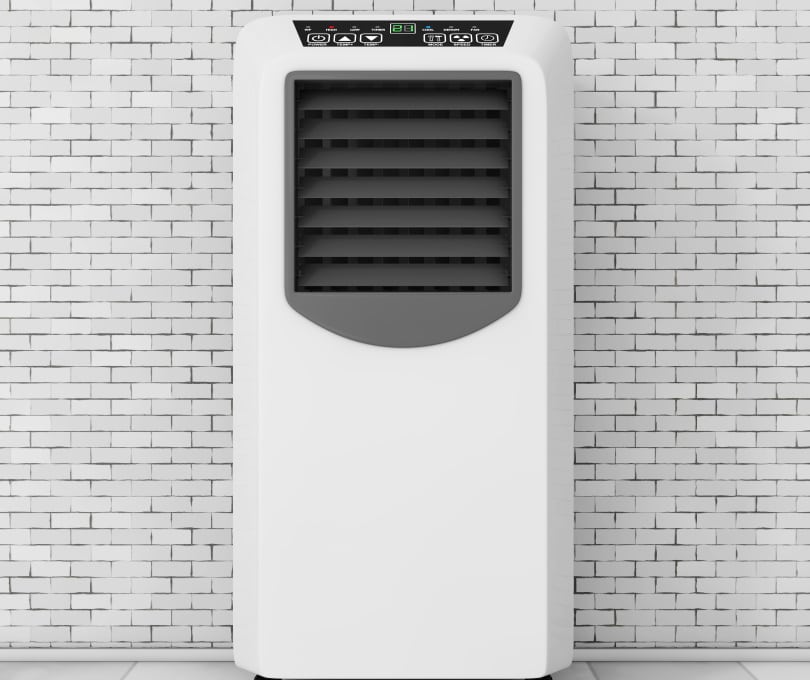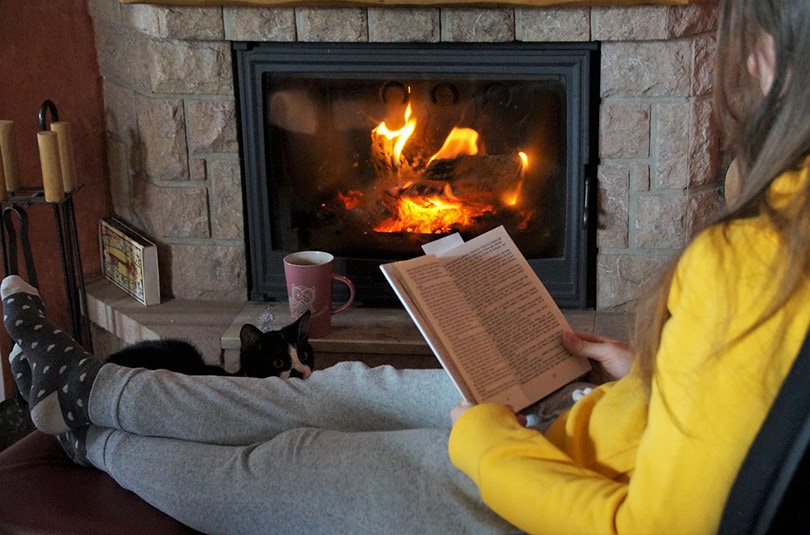Why is My House Hotter than Outside? What You Need to Know
-

- Last updated:

It’s the middle of August. It’s 80 degrees outside and humid. The air conditioning is on, the doors and windows are closed, but the house is still blistering hot. Why? The answers can be varied, but the basic reason is almost always the same: The sun is heating the house faster than the air conditioner can cool it down. The homeowner can combat this by buying a more capable air conditioning system or decreasing the amount of heat the house absorbs from the sun.
We will cover some of these situations and what the homeowner can do about them in this article.
Why is my house hotter than outside in summer?
Does the house only heat above outside temperatures in the summertime, especially in the daytime? This is likely due to the greenhouse effect.
Many people do not know that the sun does not directly heat the earth – that is, none of the heat energy from the Sun reaches the earth. Heat energy cannot travel through the vacuum of space. The sun heats the earth by radiation or light energy. When light hits the earth, some of it is converted to heat. That heat is trapped on the earth by the earth’s atmosphere.
But what does this have to do with a hot house?

The effects of insulation and heat exchange
When sunlight enters our homes through the windows, obviously it passes through them. However, when that sunlight lands on furniture, a wall, a floor, even us – any surface! – some of it is converted to heat. Most windows, walls, and ceilings are insulated. While light can travel through windows, it converts to heat that can’t get back out the same way. The windows act like the earth’s atmosphere, insulating the inside space and trapping and concentrating heat.
Well-designed houses are specifically made to trap heat either indoors or outdoors, allowing for exchange only when the homeowner opens windows or doors on purpose. This saves money on keeping the temperature and humidity at appropriate levels inside.
Why is a home hotter than outside in the summer? Because the windows and doors are closed, blinds and shutters are open, and the ceiling may not be very well insulated, meaning that sunlight coming in through the windows and hitting the roof is converting to heat that is then trapped inside, exactly the way a greenhouse works.
How to fix it?
If we need to get the home down to the temperature outside, open windows and doors, especially on opposite sides of a house in the direction a breeze is blowing. Use box fans or whole house fans to create a breeze and help move cooler outside air inside and vent hot indoor air outside.
To cool a house below the outside temperature requires HVAC (Heating, Ventilation, and Air Conditioning) systems. These systems spend energy (usually in the form of electricity when cooling) to use refrigeration to cool the air in a home or concentrate the heat and force it back outside. This article will discuss these systems in later sections.

Why does my house heat up at night even though it’s getting colder outside?
What if a house is heating up hotter than outside at night? There’s no greenhouse effect when the sun is down! This is a slightly more complex problem to sort out, but only in that we have to find the source of heat. People produce heat. So do stovetops, ovens, dryers, televisions, refrigerators (they work by removing heat from inside the refrigerator and dumping it outside into your house!), freezers, dehumidifiers, candles, and so on.
Once we know the source of the heat, the rest of the situation is the same as with the sun. Heat is being generated inside at a rate faster than it can leave the house. The house is too well insulated and sealed shut for the heat to leave.
How do we fix this problem? The same way as with the sun in the daytime. Open the windows and doors and use fans to move the hot air outside and bring cool air inside. To cool even more than the temperature outside, we have to spend energy in an HVAC system. This can be a small window unit or a large whole house system.
Why does my house feel hot even if it isn’t?
When moving from a climate like Arizona to a climate like the Ozarks or Florida, sometimes homeowners will be surprised to find that a tolerable temperature in a dry climate (say, 76-78 degrees) is sweaty and miserable in their new home. Why? What happened?
Humidity. Relative humidity is a measure of how much water is in the air. Our bodies cool, and we feel cool based on the rate of how quickly sweat evaporates off our bodies. When the air is very dry or has low relative humidity, we feel cooler. When the air is very wet or has high relative humidity, we feel warmer. This happens even at the same temperature. Sometimes people say “Well, it’s hot, but at least it’s a dry heat.” This is what they mean. The temperature is high, but the low humidity makes sweat evaporate faster, and this lets the body cool more efficiently, making the heat more tolerable.
How to tell if a house is too humid?
Hardware stores and many department stores sell devices called “hygrometers.” They can also be purchased online. They have a display that reports the current relative humidity to the user. A human-friendly range for relative humidity is 45%-55%. Any lower than 45% and too much water leaves the body when breathing. This can lead to nosebleeds and increases the chance of getting respiratory infections and the chance they will be severe. Any higher than 55% is bad for people and houses and is described below.

How to fix high humidity?
Two ways. Based on the way they work, air conditioners remove water from the air, leading to lower relative humidity and a lower temperature inside. Dehumidifiers do not cool the air (unfortunately for hot houses they heat it!), but they remove a lot of water from the air very quickly. Depending on the house and the situation, it may be more cost-effective to remove water from very humid air than focus on trying to cool it.
High relative humidity (above 55%) is unhealthy and can be dangerous. It can lead to condensate, which is water coming out of the hot air and forming as a liquid on cooler surfaces. This can be light sockets, windows, or other areas where a homeowner would not want water. It can cause molding, wood rot, and other problems over the long term. It is bad for the health as well – breathing in mold and other organisms that grow in very wet environments is unhealthy for the lungs and immune system.
If the house has mold problems or water where water shouldn’t be, it’s best to seal the house against outside sources of water and dry the air inside as part of a problem-solving approach. A reputable HVAC company can help with this process.
How much warmer should your house be than outside in winter?
What if we want our home warmer because it’s cold outside? What’s an ideal temperature, and what’s a cost-effective way to reach it?
In cold climates, cost-effective heat is always a concern for homeowners. Generally, humans are most comfortable between 68 and 72 degrees Fahrenheit, depending on humidity levels. To reach and maintain these temperatures, a house must have a source of heat and be insulated to trap that heat inside.
Sources of heat include the following, listed from most expensive to least expensive based on general trends. There may be specific exceptions.
- Electric heat. Electric block heaters work by forcing electricity to run through a heating element. A heating element can be made of metal (wires, coils, tubes, strips, or blocks) or even quartz. By forcing electricity to work against itself inside the element, heat is produced. This takes a lot of electricity for each unit of heat produced because we must convert from one form of energy (electricity) to another. Almost any heater purchased from the store that plugs into the wall will work this way, and it will drive up the electric bill.
- Propane or natural gas. Propane and natural gas are much more efficient physically and financially, as the heat they produce is from combustion, or burning the gas directly. There is no transformation of energy required, and because so much more heat is produced per unit of fuel, it costs the homeowner less.
- Wood is (usually, depending on transport costs and what you burn it in) the cheapest source of fuel. Fireplaces are not very efficient, but wood burned in a furnace, a wood stove, or an outdoor boiler gives up most of the heat from its burning to warming your home. Heat unit for heat unit, wood is one of the most cost-effective ways to heat a home.

Tips for insulating your home
The other half of the equation is to insulate a house. Window glass needs to be insulated, and the windowsills need to be well sealed to prevent drafts. Doors need to have new, tight weather stripping to ensure no drafts as well. Walls need insulation inside, and ceilings need to be insulated well. It can be hard to add insulation after a house is built, especially in the walls, but insulation can be stapled or blown into attics either by a professional or a do-it-yourselfer homeowner.
If these are too costly for a homeowner, another way to heat a house more cost-effectively is to bundle up warmly and use an electric heater, but only in occupied rooms. A few blankets hung over windows or draped to create a small, cozy area will insulate and trap heat right where it’s needed without the homeowner having to spend money to heat an entire house.
Conclusion
To cool a house, turn off sources of heat inside and block the sunlight from getting in as best you can. Use light-colored blinds, shutters, or awnings. Insulate the ceiling. If a house is hotter than outside, open windows and doors and use fans. If a house needs to be cooler than outside, a sufficiently sized HVAC system will have to be installed and used. If a house is relatively cool but feels hot and “sticky” or “muggy”, measure the humidity with a hygrometer and see if it is in the 45%-55% healthy range. If a house is not hot enough, insulate it and add or increase sources of cost-effective heat, or concentrate the heat in a smaller space that is well insulated.
Featured Image Credit: Photographee.eu, Shutterstock
Contents


